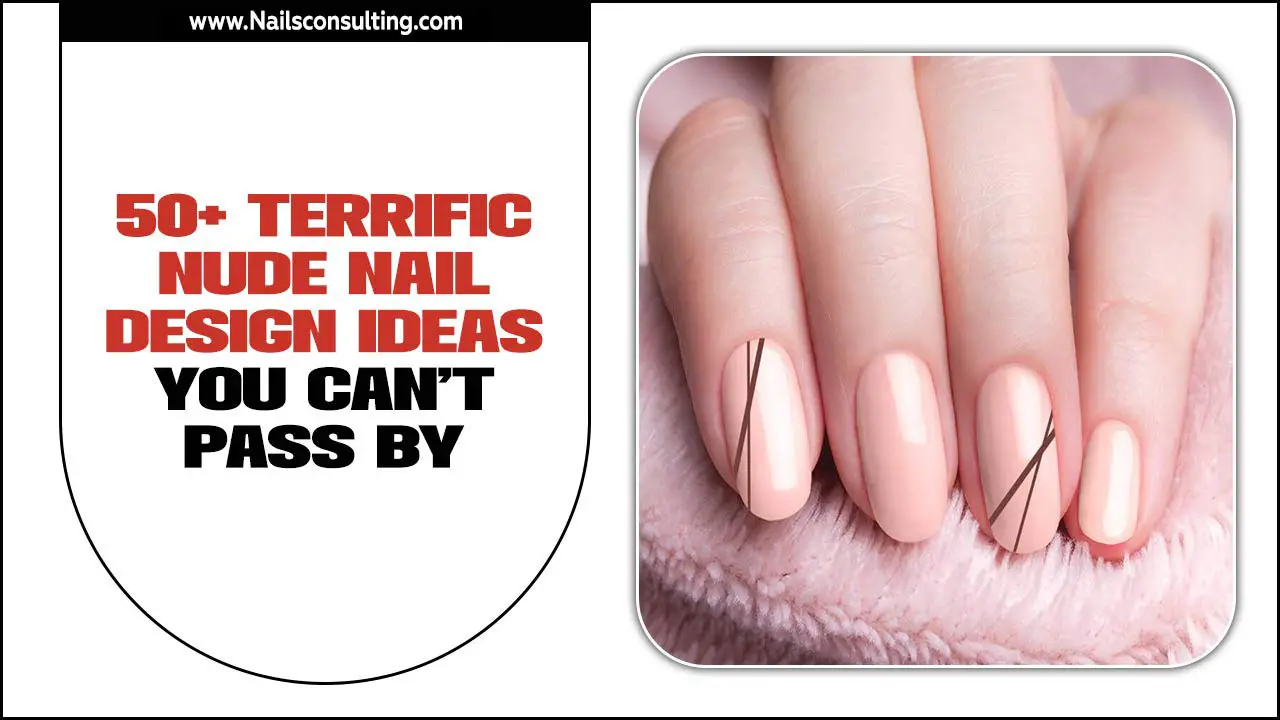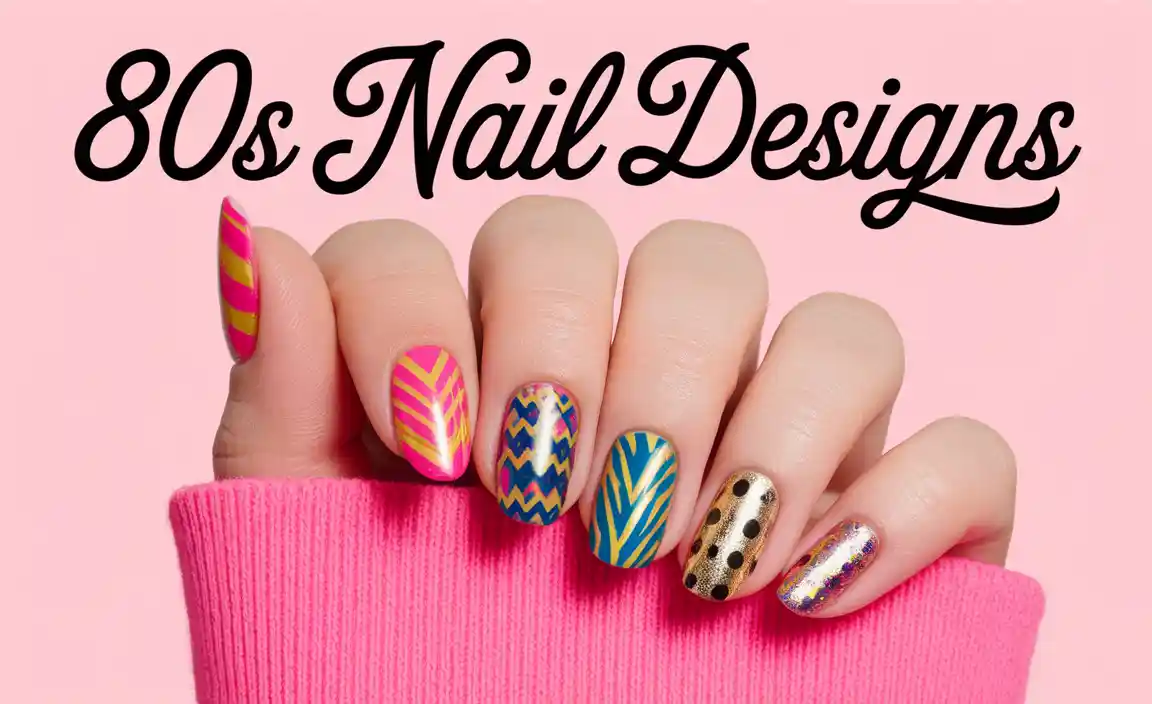To make nail designs last longer, focus on proper nail preparation, application of a good base and top coat, careful drying, and gentle aftercare. Avoiding harsh chemicals and physical damage will significantly extend the life of your beautiful nail art.
Ever spent time crafting the perfect nail design, only to see it chip and fade within a day or two? It’s a common nail art frustration! We all want our intricate patterns and cute decals to stay put, looking fabulous for as long as possible. But sometimes, life gets in the way, and our gorgeous manis take a hit. Don’t worry, though! I’m here to share my best tips, tried and tested, to help your nail designs go the distance. Get ready to enjoy your nail art for days, not just hours!
Prep is Key: Setting the Stage for Longevity
Before any polish or design touches your nails, the right preparation is absolutely crucial. Think of it like building a strong foundation for a house – without it, everything else is likely to crumble. Taking these simple steps beforehand makes a huge difference in how long your manicure will last. Let’s dive in!
1. Clean Nails Are Happy Nails
Start with a completely clean slate. This means removing any old polish, lotion, or oils. Even the tiniest bit of residue can prevent polish from adhering properly. Use a good quality nail polish remover to get your nails spotless. Rubbing alcohol or a nail cleanser can also be used to ensure all oils are gone.
2. Shape Them Up!
Trim and file your nails to your desired shape. Filing in one direction, from the side to the center, helps prevent peeling and splitting, which can prematurely ruin your design. Avoid sawing back and forth, as this can weaken the nail edge.
For more on the importance of proper nail care, the American Academy of Dermatology offers some excellent insights on nail care and common problems.
3. Gentle Cuticle Care
Push back your cuticles gently, don’t cut them aggressively. Cuticles protect your nail matrix (where the nail grows from) from bacteria. Damaging them can lead to infections and weak nail growth. Using a cuticle remover and a wooden or metal cuticle pusher is usually enough before applying polish.
4. Buffing for Grip
Lightly buff the surface of your nails. This creates a slightly textured surface for the polish to grip onto, leading to better adhesion. Use a fine-grit buffer and don’t overdo it – you just need a matte finish, not to thin out your nail plate.
Applying for Maximum Durability: Base Coat, Polish, and Top Coat Power
The products you use and how you apply them are just as important as the prep. A smart application strategy will lock in your design and protect it from everyday wear and tear.
The Mighty Base Coat
Never skip the base coat! A good base coat does several things:
- Prevents Staining: It creates a barrier between your nail and the polish color, stopping dark polishes from staining your natural nail.
- Provides Adhesion: It gives the color polish something to stick to, making it less likely to peel or lift.
- Smooths Imperfections: It can fill in minor ridges and create a smooth canvas for your design.
Choose a base coat that suits your nail needs – there are strengthening ones, quick-dry options, and smoothing formulas available.
Applying Your Color and Design
Thin Coats are Best: Apply your polish in thin, even coats. Thick coats take longer to dry and are more prone to smudging and chipping. Usually, two thin coats of color is better than one thick one.
Cap Your Free Edge: When applying color polish and especially your top coat, draw the brush horizontally across the very tip (the free edge) of your nail. This seals the polish, preventing chips from starting at that vulnerable edge. It’s a pro trick that makes a world of difference!
Drying Time Between Layers: Allow each layer of polish to dry sufficiently before applying the next. The “touch test” is a good guide: if it feels tacky, it’s not dry enough. Rushing this step is a recipe for smudges and a shortened manicure life.
The Essential Top Coat
Your top coat is your design’s best friend! It acts as a protective shield:
- Seals and Protects: It locks in your color and design, preventing chipping and wear.
- Adds Shine: Most top coats give your manicure a beautiful, glossy finish.
- Smooths Out Texture: If you’ve applied glitter or multiple layers of polish, a good top coat will give a smooth, even surface.
Consider using a “gel-like” or “long-wear” top coat for extra durability. “Quick-dry” top coats are great for speeding up the process, but sometimes a dedicated long-wear top coat offers more robust protection.
The Art of Application for Nail Designs
Applying nail art itself requires a bit of finesse to ensure it lasts. Whether you’re using polish, stickers, or other embellishments, technique matters.
Using Nail Polish for Designs
For intricate details with polish, use fine-tipped brushes or striping tools. Apply these details over a dry layer of your base color. Once your design is complete and completely dry, apply a generous layer of top coat, making sure to cap the free edge.
Stickers and Decals
Nail stickers and water decals are super easy! Apply them over fully dry base color. Gently press them down to ensure there are no air bubbles. Seal them with a top coat, but be careful not to “drag” the sticker with your brush. Apply the top coat with light, deliberate strokes.
3D Embellishments (Gems, Glitter, Studs)
For 3D elements like rhinestones or studs:
- Apply a small bead of top coat or nail glue where you want to place the embellishment.
- Use a wax pencil or tweezers to pick up the gem and place it.
- Gently press it down.
- Once in place, carefully apply top coat around the base of the embellishment, avoiding flooding it completely, which can dull its shine. Some people prefer to use a gel top coat for these, as it provides a stronger seal.
Drying Techniques: Patience is a Virtue (and a Necessity!)
This is where many people rush, and it’s a big reason why manicures chip so fast! Proper drying is non-negotiable.
The Air Dry Method
This is the most common method. The key is patience. Let your nails air dry completely between coats. This can take anywhere from 5-15 minutes per coat, depending on the polish formula and thickness.
Quick-Dry Drops and Sprays
These products can significantly speed up the drying process. They usually work by creating a barrier that encapsulates the polish and helps the solvents evaporate faster. Use them after your final top coat. Follow the product’s instructions carefully.
Cold Water Trick
After about 20-30 minutes of drying time (don’t submerge them too soon!), you can try a quick dip in a bowl of very cold water for a minute or two. The cold can help to harden the polish. Make sure your polish is no longer wet to the touch before trying this.
UV/LED Lamps (Gel Polish Primarily)
If you’re using gel polish, a UV or LED lamp is essential for curing the polish. This hardens the gel, making it incredibly durable and long-lasting. Regular nail polish will NOT cure under these lamps – it will just stay sticky.
Aftercare: Protecting Your Masterpiece
Once your nails are perfectly dry and your design is sealed, it’s time for the protective phase. How you treat your nails in the days following your manicure can make a huge difference.
1. Moisturize, Moisturize, Moisturize!
Keep your nails and cuticles hydrated. Dryness can lead to brittle nails, which are more prone to breaking and chipping. Use cuticle oil regularly, especially after washing your hands.
Pro Tip: Applying cuticle oil before bed is a fantastic way to give your nails an intensive overnight treatment. Massaging it in also promotes healthy nail growth.
2. Wear Gloves!
This is arguably ONE of the most important tips for extending nail life. When doing chores involving water or harsh chemicals (like washing dishes, cleaning the house, or gardening), always protect your hands and nails with rubber gloves. Water exposure, especially prolonged and with detergents, can make polish lift and weaken your nail.
3. Avoid Using Your Nails as Tools
Resist the urge to use your nails to scrape, pry, or open things! They are for decorative purposes, not utility. Using them as tools is a sure-fire way to cause chips, breaks, and snags that ruin your design.
4. Be Gentle
Be mindful of your nails throughout the day. Avoid banging them on hard surfaces or getting them caught on things. Small actions add up!
5. Touch-Ups
For minor chips or wear, you can often perform a quick touch-up. Gently file away the rough edge of the chip. Then, carefully apply a thin layer of your base color, or even just your top coat, to the affected area. This can often blend in the damage and extend the life of your manicure until you can do a full redo.
Common Polish & Design Issues and How to Fix Them
Here’s a quick guide to troubleshooting when your manicure isn’t behaving:
| Problem | Cause | Solution |
|---|---|---|
| Polish is peeling/lifting | Improper prep (oily nails), base coat skipped, or edge not capped. | Ensure nails are clean and oil-free. Always use a base and top coat, and cap the free edge. For existing peel, gently file the lifted edge smooth using a fine grit file and apply a thin layer of top coat over the area. |
| Nail design smudging | Polish not fully dry before next step/activity. | Allow ample drying time between coats and before normal activity. Use quick-dry drops or sprays. For minor smudges, gently smooth with a fingertip or a damp cuticle pusher if the polish is still pliable (use caution). |
| Chips at the free edge | Free edge not sealed/capped with polish. | Apply base coat, color, and top coat with a horizontal stroke across the very tip of the nail. |
| Nail art fading or losing shine | Top coat not durable enough, or design elements not sealed properly. | Use a high-quality, long-wear top coat and reapply it every 2-3 days. Ensure all design elements are fully encapsulated by the top coat. |
| Bubbles in polish | Polish shaken too vigorously, applied too thickly, or product is old. | Roll polish bottles between your hands instead of shaking. Apply polish in thin coats. Ensure your polish is not old and expired. |
Expert Tips Table
| Tip Type | Description | Impact on Longevity |
|---|---|---|
| Nail Prep | Clean, shaped, and lightly buffed nails. | High: Ensures polish adhesion. |
| Base Coat | Always apply a dedicated base coat. | High: Prevents staining and improves adherence. |
| Thin Coats | Apply polish in thin, even layers. | Medium: Faster drying, less prone to smudging. |
| Capping Free Edge | Sealing the nail tip with every coat. | Very High: Prevents chips from the edge. |
| Top Coat | Generous application of a quality top coat. | Very High: Protects design, adds shine, seals. |
| Drying Time | Adequate waiting between coats. | High: Prevents smudges and premature wear. |
| Moisturizing | Regular use of cuticle oil and hand lotion. | Medium: Keeps nails healthy and less brittle. |
| Protective Gloves | Wearing gloves for household chores. | Very High: Protects from water and chemicals. |
Frequently Asked Questions (FAQ)
Q1: How long should I let my nail polish dry before doing anything?
A1: Even after the polish feels dry to the touch, it can still be soft underneath. It’s best to wait at least 30 minutes to an hour before engaging in activities that could smudge or chip your manicure. Quick-dry drops can help speed this up, but patience is still your best strategy.
Q2: Can I put a regular top coat over nail art stickers or embellishments?
A2: Yes, you can! Just be gentle with your application strokes to avoid moving the sticker or embellishment. For 3D items like gems, apply the top coat around their base rather than flooding them, which can dull their sparkle. Some people prefer gel top coats for extra grip on embellishments.
Q3: My nail polish always chips after a day. What am I doing wrong?
A3: This is often due to skipping essential steps like proper nail prep, a base coat, or failing to cap the free edge. Make sure your nails are clean and oil-free, apply a good base coat, seal your tips with each polish layer, and finish with a durable top coat. Wearing gloves for chores is also a game-changer!
Q4: How often should I reapply my top coat to make my manicure last?
A4: For maximum longevity, try reapplying a layer of your top coat every 2-3 days. This helps to refresh the protective seal and maintain shine, preventing wear and tear from setting in too deeply.
Q5: What’s the difference between a regular top coat and a gel top coat?
A5: Regular top coats air dry and harden. Gel top coats require curing under a UV or LED lamp, creating a very hard, durable, and glossy finish that is much more resistant to chipping and scratching. They are designed to work with gel polish systems but can sometimes be used with regular polish by some users, though results may vary.
Q6: How do I prevent my nail designs from looking ‘thick’ or ‘chunky’?
A6: The best way to avoid thickness is to apply all your polishes and design elements in thin, even coats. If you’re using multiple layers of polish for a design, let each layer dry thoroughly before adding the next. A smooth, high-quality top coat can also help to even out any slight texture.
Q7: Can I use nail glue to attach gems if my top coat won’t hold them?
A7: Yes, nail glue is a strong option for attaching embellishments like gems and studs. Apply a tiny bead of glue to the nail, place your gem, and hold gently for a few seconds until it adheres. Once the glue is dry, you can carefully apply a top coat around the base of the gem for extra security and shine.
Conclusion
Making your nail designs last longer is totally achievable, and it all comes down to a few key practices. From meticulous nail prep that ensures a perfect canvas, to the strategic application of base coats, polishes, and top coats – especially capping those important free edges – every step counts. Don’t forget the power of patience in drying and the simple yet crucial act of wearing gloves for chores. By incorporating these tips into your nail art routine, you’ll find yourself enjoying your stunning creations for much, much longer. So go ahead, experiment with those designs, and wear them with pride, knowing they’re built to last!





